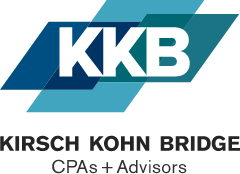Insights
Clean Vehicle Credit comes with caveats
October 6th, 2022/Advisory
The Inflation Reduction Act (IRA) includes a wide range of tax incentives aimed at combating the dire effects of climate change. One of the provisions receiving considerable attention from consumers is the expansion of the Qualified Plug-in Electric Drive Motor Vehicle Credit, now known as the Clean Vehicle Credit.
While the expanded credit seems promising, questions have arisen about just how immediate its impact will be. Here’s what you need to know about the credit if you’re thinking about purchasing an electric vehicle (EV).
The credit in a nutshell
The Qualified Plug-in Electric Drive Motor Vehicle Credit has been around since 2008. For passenger vehicles and light trucks acquired after December 31, 2009, the credit starts at $2,500 and maxes out at $7,500, depending on battery size.
The credit amount begins to phase out for a manufacturer’s vehicle when at least 200,000 qualifying vehicles have been sold for use in the United States (for sales after December 31, 2009). As a result of this limitation, vehicles, including those manufactured by Tesla and General Motors, no longer qualify for the credit.
The IRA extends the newly named Clean Vehicle Credit through December 31, 2032. It also makes several significant changes to the credit, most of which will phase in over time. For example, the credit now applies to any “clean” vehicle, so a hydrogen fuel cell car or a plug-in hybrid could qualify. It also eliminates the manufacturer production cap after 2022.
The IRA leaves intact the $7,500 maximum credit amount, but splits it. You can earn a $3,750 credit if the qualifying vehicle meets a critical minerals requirement and another $3,750 credit if the vehicle meets a new battery component requirement.
The credit now includes limitations related to a taxpayer’s adjusted gross income, and it is also limited by the price of the vehicle. Vans, pickup trucks and SUVs with manufacturer’s suggested retail prices (MSRPs) of more than $80,000 don’t qualify. Other cars must have MSRPs no higher than $55,000.
One critical change took effect immediately after President Biden signed the bill into law: the so-called “final assembly” requirement. It limits the credit to vehicles for which final assembly occurred in North America. Final assembly generally refers to the production of an EV at the location from which it’s delivered to a seller with all of the necessary component parts included. The requirement is designed to encourage domestic production.
For now, taxpayers who purchase qualifying EVs will continue to claim a credit on their annual tax returns. The IRA, however, provides an alternative — and much more taxpayer-friendly — option beginning in 2024, when EV purchasers can transfer their credit to dealers at the point of sale and the credit will directly reduce the purchase price.
Transitional relief for purchasers
What if you signed a contract on an EV before August 16, 2022, when the IRA was enacted, but haven’t yet received the vehicle? The IRS has stated that the changes in the law won’t affect your tax credit. You can claim it under the rules in effect when you signed the purchase contract.
Unfortunately, that means the manufacturer cap will still apply. If you purchase a vehicle from a manufacturer that hit the 200,000 vehicle threshold more than a year prior, you don’t qualify for the EV credit. On the other hand, the final assembly requirement won’t apply. If you purchase and take possession of a qualifying EV after the law was signed (August 16, 2022) but before January 1, 2023, the manufacturer cap also would apply to your purchase. So, if you’re interested in a model that’s disqualified under the cap, it might pay off to wait until 2023 if the vehicle meets the requirements then.
New credits for used and commercial vehicles
The IRA also creates tax credits for used EVs and commercial EVs, both starting in 2023. The IRS has indicated it will release more information on these credits in the coming months.
California Rules
California has no comparable credit but does have a rebate for the purchase of “clean vehicles.” The rebate amount ranges from $1,000 to $7,000 depending on the vehicle ($750 for eligible motorcycles). In addition, low-income families can get an additional rebate of up to $2,500.
The Clean Vehicle Rebate Project (CVRP) is funded by the California Air Resources Board (CARB) and administered statewide by the Center for Sustainable Energy (CSE) in order to promote the production and use of zero-emission vehicles, including electric, plug-in hybrid electric and fuel cell vehicles.
There are three different types of vehicles eligible for the project: Zero-Emissions Vehicles (ZEV), Plug-in Hybrid Electric Vehicle (PHEV), and Zero-Emission Motorcycles (ZEM). Vehicle manufacturers must apply for CVRP eligibility with the California Air Resources Board (CARB) and meet a number of program requirements. If all requirements are met, the vehicle is added to the list of Eligible Vehicles (https://cleanvehiclerebate.org/en/eligible-vehicles). CVRP-eligible cars have a maximum manufacturer’s suggested retail price (MSRP) of $45,000. CVRP-eligible SUVs, trucks, and vans have a maximum manufacturer’s suggested retail price of $60,000. Note that on March 15, 2022, Tesla increased the manufacturer’s suggested retail price (MSRP) of the Model 3 and Model Y which places these vehicles over the CVRP MSRP cap. Based on CVRP vehicle eligibility requirements, any Tesla Model 3 or Model Y that was ordered on or after March 16, 2022, is not eligible for a CVRP rebate.
More information on this program can be found at: https://cleanvehiclerebate.org/eng
Only the beginning
The IRS and Treasury Department have promised to issue additional guidance about the various new and existing EV-related tax credits in the coming weeks and months. We’ll keep you up to date on new developments.
© 2022
For more helpful tax and accounting articles, or to sign up for our newsletter, please visit our KKB Insights page. And if you have additional questions, please contact us. We are here to help!
TAGS: Advisory


